In the heart of Hackney is a medieval clock tower, and occasionally it’s open to the public to climb up and stand on the roof for some pretty decent views across East London.
A church has been on this spot since at least 1275, and was likely set up by the Knights Templar who dedicated it to their patron saint, Saint Augustine. Following the downfall of the Templars, the church passed to the Knights Hospitaler, and was then later seized by King Henry VIII.
Although the church was re-dedicated to St John, the tower continues to be named after St Augustine.
Hackney remained a small village until the 18th-century when it started to expand, and by the end of the century the church was too small to cope with the growing population, so another church was built nearby, and after it was consecrated in 1897, the old church was demolished leaving just the tower standing.
It’s said that the tower was also supposed to be torn down, but the contractor decided it was too much hassle, and no one complained either. And so it remained, through the centuries to modern times, an isolated mote of heritage in modernising Hackney, and now occasionally open to the public to climb up to the roof.
Medieval clock towers were not designed to be ascended that often, and certainly not by members of the public, so access is usually by a very narrow spiral staircase that can prove challenging at times.
The main entrance space has a door-sized gap in the upper wall, presumably where a floor used to be, and now offers a view of people using the stone staircase to get up to the roof.
Getting up, and down a narrow staircase involves listening for anyone else on the stairs, calling out “coming up/coming down”, and hoping you don’t meet anyone coming the other way, as one of you is going to have to retreat. This generally works, although there’s always someone who just plunges headfirst onto the stairs without thinking only to be sheepishly returning a moment later.
There are fortunately three floors on the way up/down to break the journey, and to let people pass you.
The first level has a lot of display boards that go into a lot of interesting detail about the history of Hackney and the church, and makes for a nice break on the way up.
The second floor has a clock – and what a clock it is. Thought to be some 400 years old and may date to the 1580s. Wound by hand through the centuries, only recently was a motor added.
Up another floor to an empty space with a solitary bell hanging on a frame, and this was originally the bell room with rather more bells than here today.
By now though the staircase is getting alarmingly narrow and the steps equally so, but carry on up, and right at the very top is a small doorway you can sort of crawl through and clamber onto the roof at last. Catch your breath a bit and maybe cling on to the handrail around the edges for a while as legs stop wobbling. There’s quite a lot of graffiti on the lead roof, and also on a small wooden staircase in a room below, although as far as anyone knows, no notable names in the scribbles.
But finally, the reward for the climb, as the clock tower offers impressive views above the treetops across a large swathe of East London. Over there is the clock tower of the church that replaced this one. Over there is the City of London. Look down at the streets below, or wait a while to see the London Overground train heading to Stratford.
This isn’t a grand vista of a grand city, it’s much more intimate and closer, but also of a part of London that is so rarely seen from this height. That unusual perspective and the challenging climb up, and oh, you still need to get back down again, makes for a very rewarding 30-40 minutes or so on a visit.
The clock tower reopened last month and will be open once more this year, on Sunday 28th November between 2pm-4:30pm, and then resumes its monthly openings on the last Sunday of the month from next year.
Entry is free, but do leave a cash donation in the box.

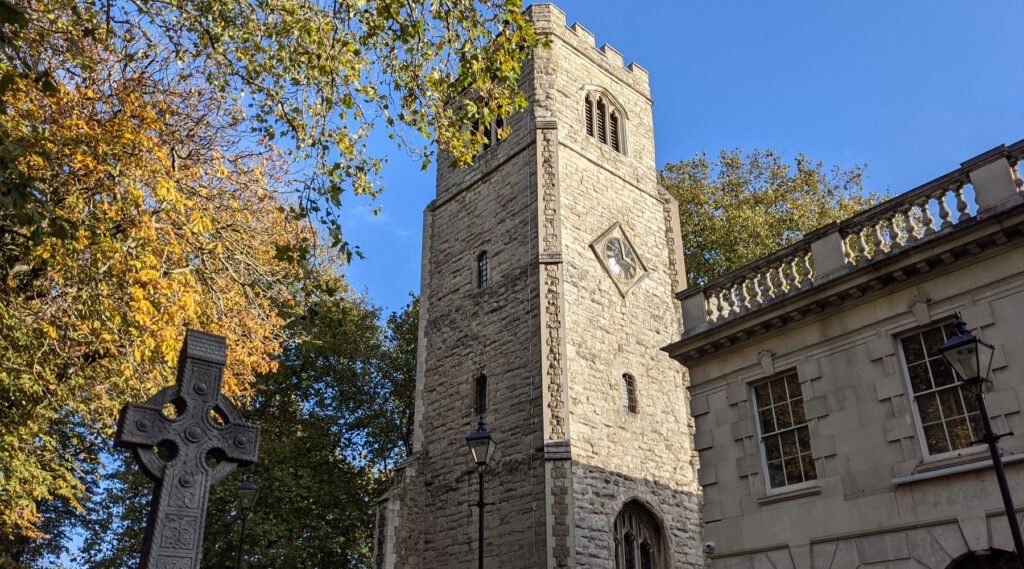
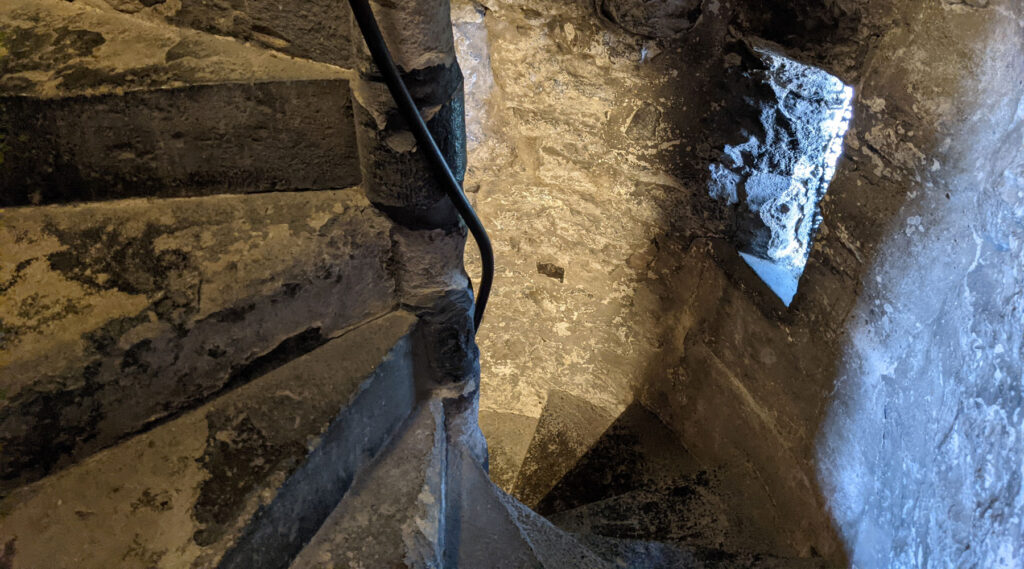
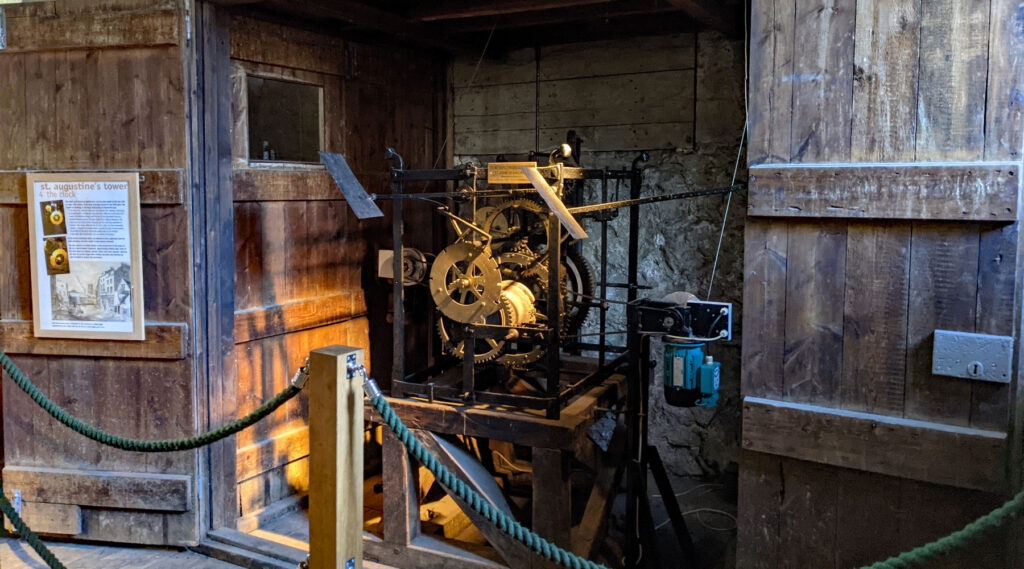
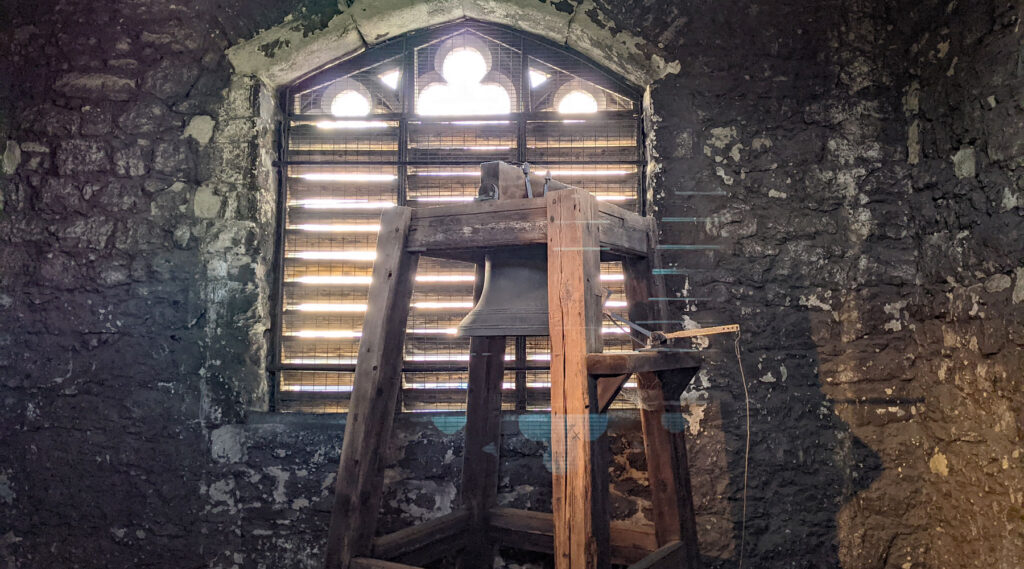
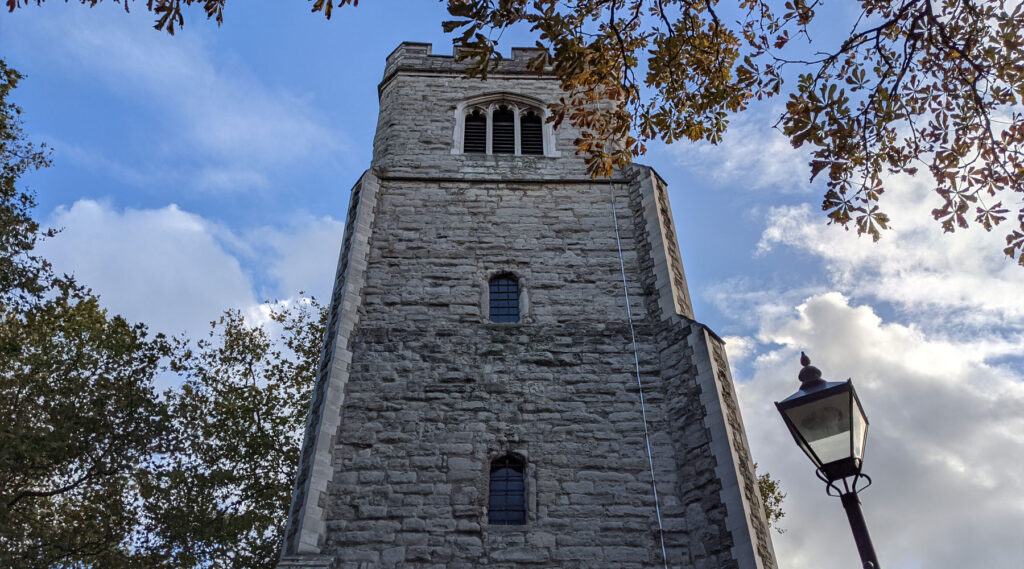
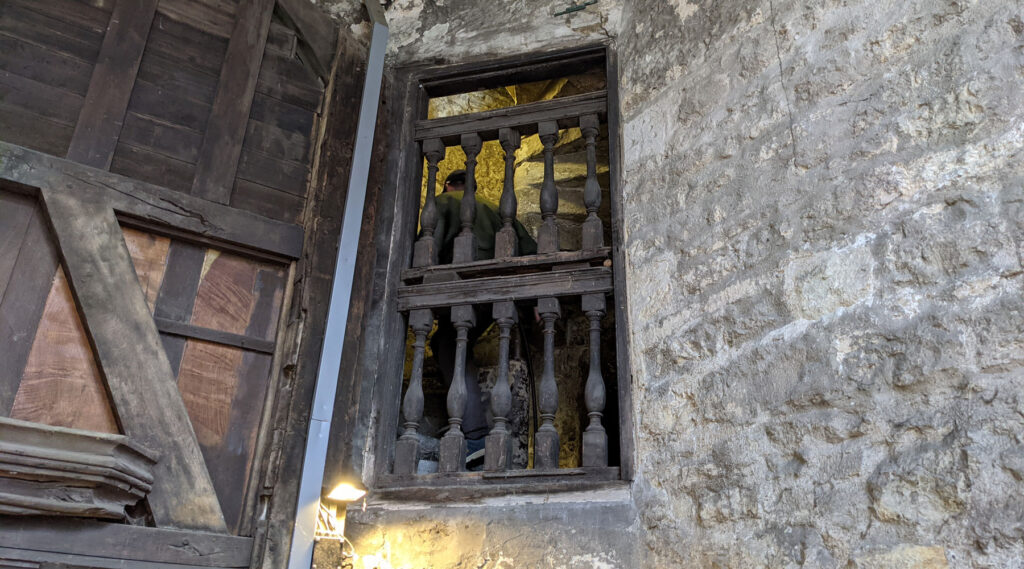
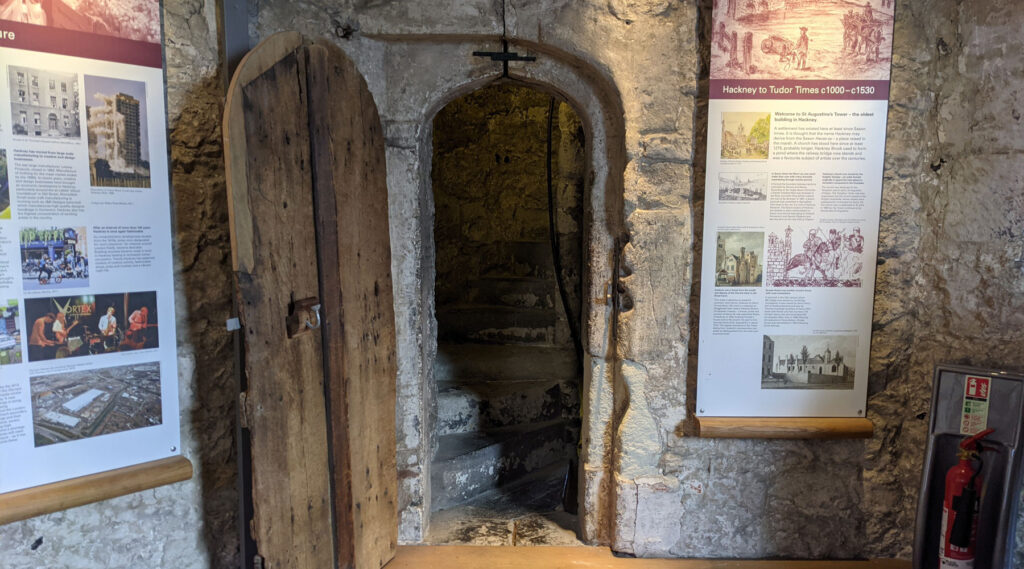
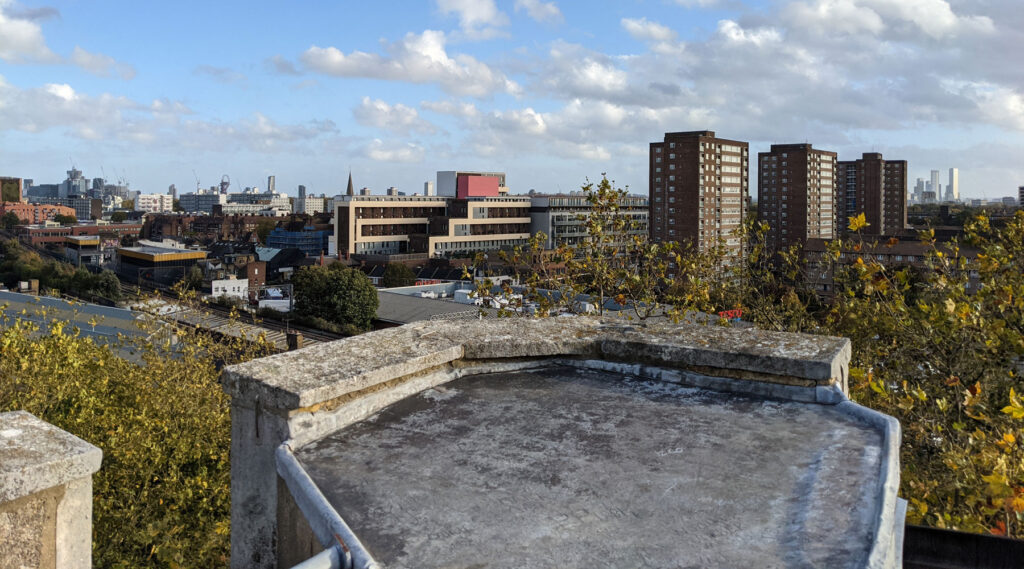
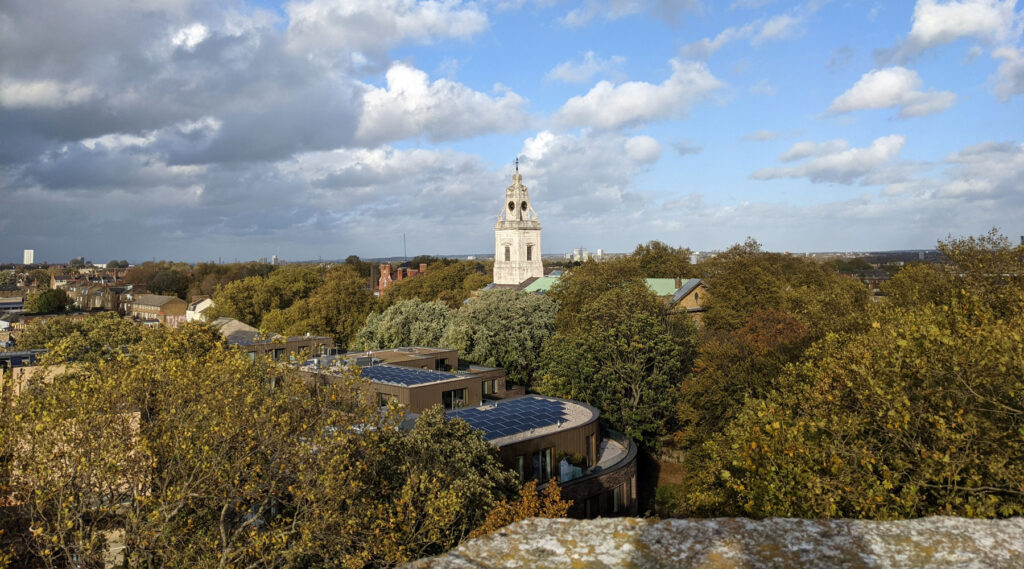
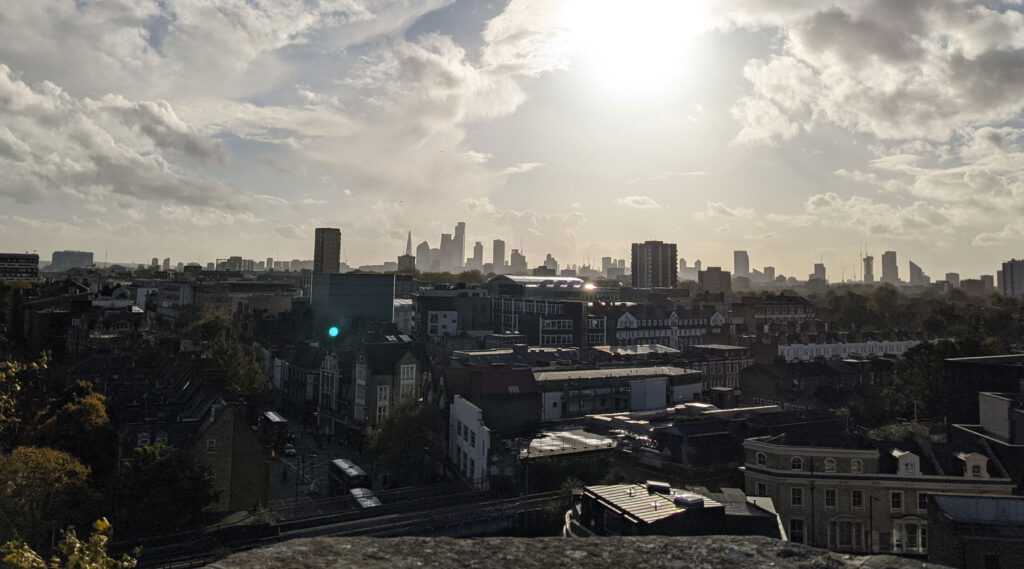
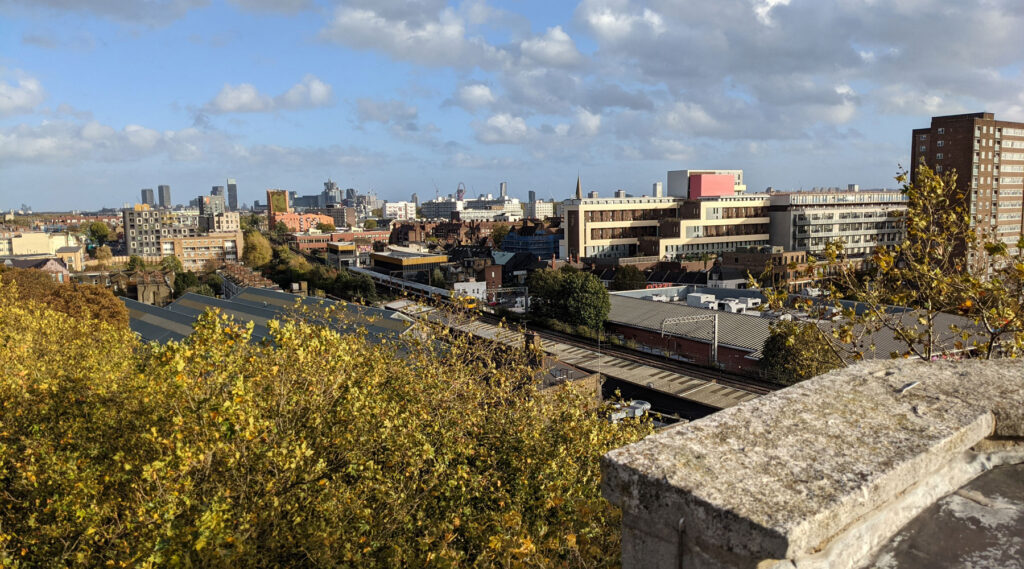
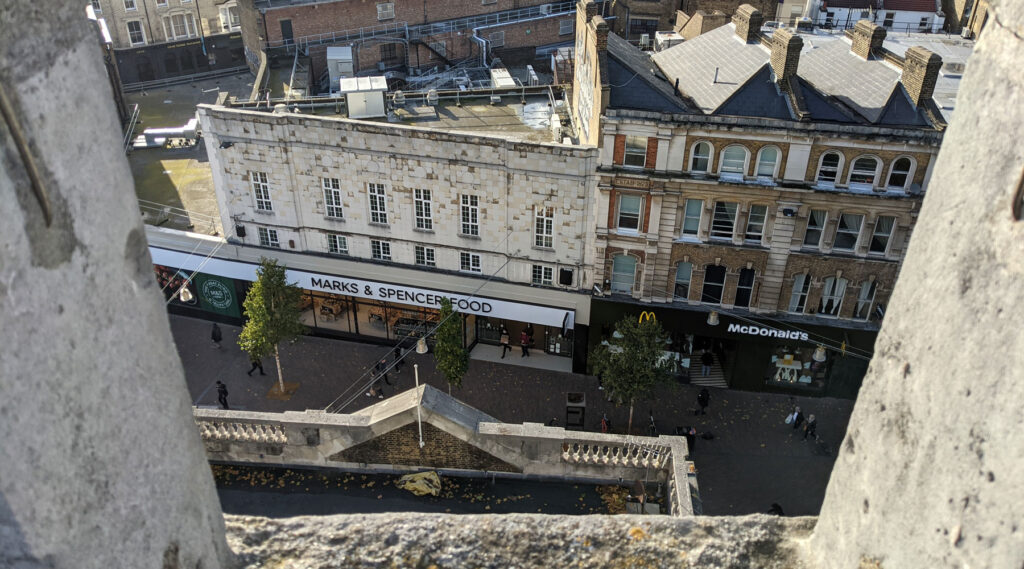






Nice write up and I hope this encourages others to visit. However a couple of errors. The new church was consecrated in 1797, and the tower only exists today because the new church didn’t have one strong enough to contain the forces exerted by bells being rung full circle until 1854/6. The new tower wasn’t built until 1814 and was underpinned in 1854 by which time the structure was recognised as being an ‘important historical landmark’ – quote from interpretation boards in the old tower. The eight bells along with the frame and all fittings were transferred to the new tower in 1856 where they continued to be rung until the fire in 1955. Finally I believe that the tower is open more than just the once as indicated in your text and this should be corrected.